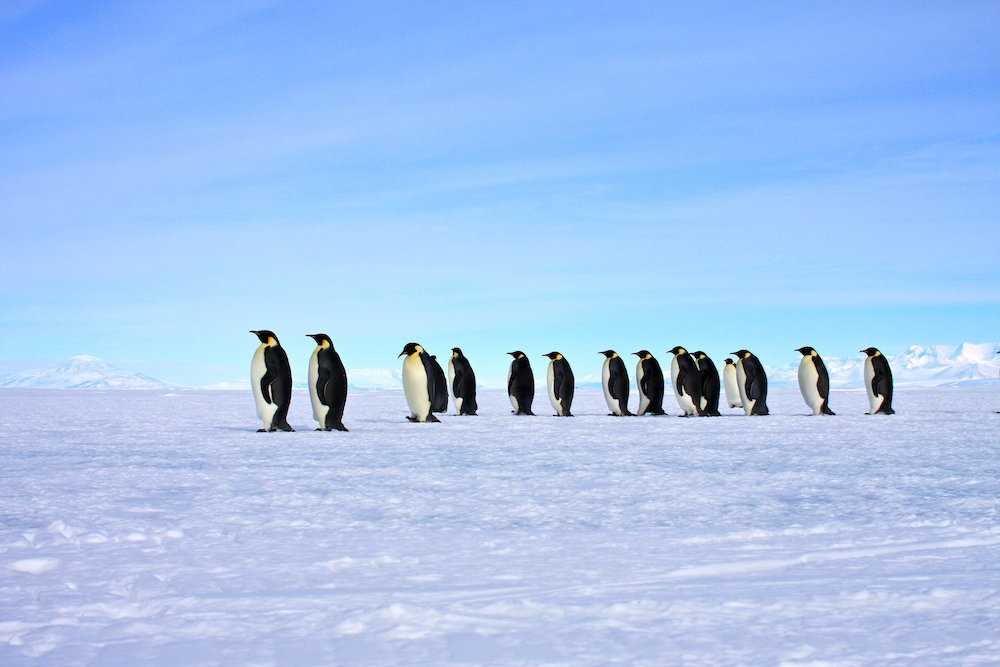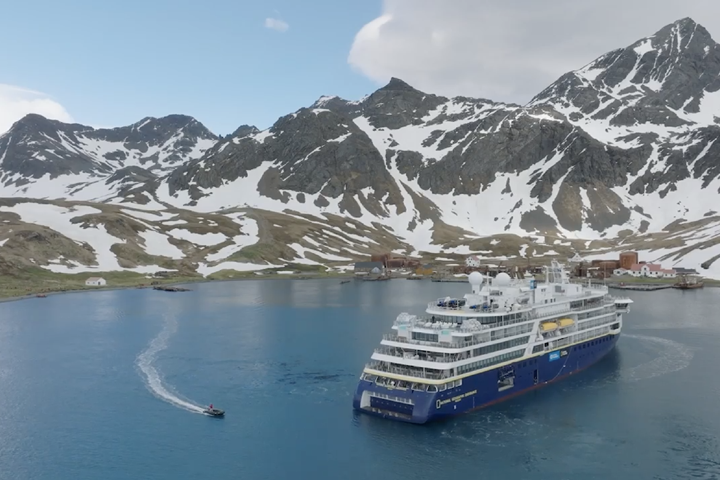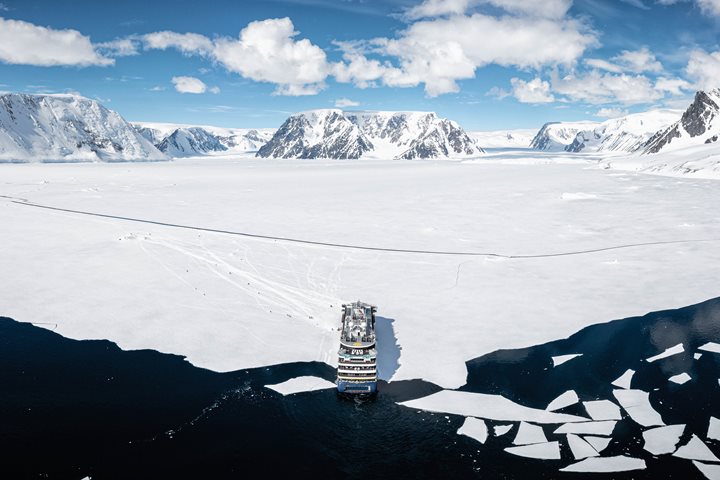Call +1.800.397.3348 or contact your travel advisor
The Ross Sea, the world’s southernmost sea, has been called the “Last Ocean.” Spanning 246,000 square miles and set between Victoria Land and Marie Byrd Land, it’s one of the most pristine places left on the planet and one of the least-visited polar destinations. Visiting for the bragging rights alone is worth it—but lucky polar explorers who venture here will discover some of the finest wildlife and wildness imaginable. Here are just a few of the reasons why the Ross Sea is a must-see.
It’s Steeped in Exploration and Scientific History
Though incredibly remote, some of the most intrepid explorers of our time made their way through these icy waters. When you explore here you follow in the footsteps of legends like Robert Scott, Ernest Shackleton, and James Clark Ross, the 19th-century explorer for whom it was named.
Ross first discovered the sea on January 5, 1841 on an unsuccessful expedition to reach the south magnetic pole. While his party determined the pole was much farther south than thought, Ross did make several other significant discoveries along the way including Victoria Land, Mount Erebus (the southernmost active volcano on Earth), and the Ross Ice Shelf.
Beyond exploration, the Ross Sea also has the longest history of scientific research in the Southern Ocean. Scientists have data beginning 170 years ago, and continuous records going back over 50 years. This wealth of reliable data is an incredible asset and allows researchers to better understand environmental and ecological changes in this critical part of the planet.
The Wildlife is Incredibly Abundant and Exciting
When you think of biodiversity chances are your mind goes to the Amazon rainforest or the jungles of Costa Rica, but the Ross Sea is actually teeming with a variety of life. It may comprise only two percent of the Southern Ocean but it’s the most productive stretch of Antarctic waters with at least 10 mammal species, 95 species of fish, more than 1,000 invertebrate species, and several species of seabirds including Antarctic petrels, snow petrels, and south polar skuas.
You can find almost a third of the world’s emperor penguins—the largest of all penguins at 45 inches tall—along with more than a third of all Adélie penguins. Also making their home here are Antarctic minke whales, three distinct types of orcas, leopard seals, and crabeater and Weddell seals.
It’s Home to the World’s Largest Ice Shelf
Witnessing the spectacularly massive Ross Ice Shelf is something every polar explorer should experience at least once. At 193, 363 square miles (that’s almost the size of France), the shelf covers close to half of the Ross Sea and plays an important role in stabilizing the Antarctic ice sheet, buttressing the ice that is constantly moving over the land surface. The cliffs at its northern front stretch over 400 miles and tower up to 130 feet above the water—but as impressive as it looks from the surface, just like an iceberg, 90 percent of its mass remains hidden below.
Researchers studying the shelf recently discovered it ‘hums’ when winds whip across the surface. How cool is that? Listen to the eerie sounds here.
The World’s Largest Marine Reserve Is Located Here
In October 2016 the Commission for the Conservation of Antarctic Marine Living Resources unanimously voted to create a substantial marine-protected area in the Ross Sea. More than twice the size of Texas, the reserve protects all of the flora and fauna within it from the impacts of fishing and other commercial uses. After years of concern and hard work to secure conservation, it’s a huge win for this wild and important polar location. And it’s a testament to how special and spectacular this place truly is.




